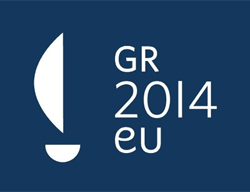Regional Policy
The legal basis of the Regional policy is Title XVII of the Treaty establishing the European Community.
Although the European Union is one of the richest parts of the world, there are striking internal disparities of income and opportunity between its regions. The entry of 10 new member countries in May 2004, whose incomes are well below the EU average, has widened these gaps.
Big differences in prosperity levels exist both between and within member states. Even before enlargement, the ten most dynamic regions of the EU had a level of prosperity, measured by GDP per capita, which was nearly three times higher than the ten least developed regions. The most prosperous regions are all urban - London, Hamburg and Brussels.
The dynamic effects of EU membership, coupled with a vigorous and targeted regional policy, can bring results. The case of Ireland is particularly heartening. Its GDP, which was 64% of the EU average when it joined 30 years ago, is now one of the highest in the Union.
Regional policy transfers resources from affluent to poorer regions. It is both an instrument of financial solidarity and a powerful force for economic integration.
One of the current priorities is to bring living standards in the new member states closer to the EU average as quickly as possible.
The cost of success
The EU policy to reduce regional disparities is built on four structural funds:
- the European Regional Development Fund;
- the European Social Fund;
- the section of the EU’s common agricultural fund devoted to rural development;
- financial support for fishing communities as part of the common fisheries policy (CFP).
These funds will pay out about €213 billion, or roughly one third of total EU spending, between 2000 and 2006.
A further €18 billion is allocated to the Cohesion Fund, set up in 1993 to finance transport and environment infrastructure in member states with a GDP less than 90% of the Union average at the time (Greece, Ireland, Spain and Portugal).
Where the money goes
Unlike the cohesion fund, poor or disadvantaged regions in all EU countries can benefit from the four structural funds according to certain criteria or objectives.
- A total of 70% of funding goes to so-called Objective 1 regions where GDP is less than 75% of the EU average. About 22% of the Union population live in the 50 regions benefiting from these funds which go to improving basic infrastructure and encouraging business investment.
- Another 11.5% of regional spending goes to Objective 2 regions (areas experiencing economic decline because of structural difficulties) to help with economic and social rehabilitation. Some 18% of the EU population live in such areas. An Objective 2 programme in Denmark, receiving €162m from the structural funds, has succeeded in improving transport and telecommunications in small islands and coastal communities with limited access by land and little local fresh water.
- Objective 3 focuses on job-creation initiatives and programmes in all regions not covered by Objective 1. 12.3% of funding goes towards the adaptation and modernisation of education and training systems and other initiatives to promote employment.
There are also four special initiatives, accounting between them for 5.35% of the structural funds:
- cross-border and inter-regional cooperation (Interreg III);
- sustainable development of cities and declining urban areas (Urban II);
- rural development through local initiatives (Leader +);
- combating inequalities and discrimination in access to the labour market (Equal).
Looking after new members
With enlargement, the area and population of the Union has expanded by 20% while GDP has increased by less than 5%. The GDP of the newcomers varies from about 72% of Union average in Cyprus to about 35-40% in the Baltic States (Estonia, Latvia and Lithuania). The Union has created tailor-made financial programmes for the period 2000-2006 to help the newcomers adjust to membership and to start narrowing the income gap with the rest of the Union.
To supplement these programmes, the Union has set aside a further €23 billion from the structural and cohesion funds to be spent in the new member states in the period 2004-2006.
Beyond the short term
The European Commission has already (in July 2004) published its proposals for a new-look and more integrated regional policy for the period 2007-2013 after present programmes run out. Procedures will be simplified and funding concentrated on the most needy regions of the 25 member states. For the new period, the Commission proposes a regional policy budget of €336 billion, still the equivalent of one third of the total EU budget.
The idea is to divide the spending into three categories. Of the total amount, 79% would go on reducing the gap between poor and richer regions while 17% would be spent on increasing the competitiveness of poor regions and creating local jobs there. The remaining 4% would focus on cross-border cooperation between frontier regions.






 Svejo
Svejo Twitter
Twitter Link4e
Link4e Pipe
Pipe Web-bg
Web-bg Bghot
Bghot Lubimi
Lubimi Novinitednes
Novinitednes Ping
Ping Facebook
Facebook Myspace
Myspace Mix
Mix Del.ico.us
Del.ico.us Reddit
Reddit Digg
Digg Stumbleupon
Stumbleupon Myweb Yahoo
Myweb Yahoo Google Bookmarks
Google Bookmarks Google Buzz
Google Buzz

